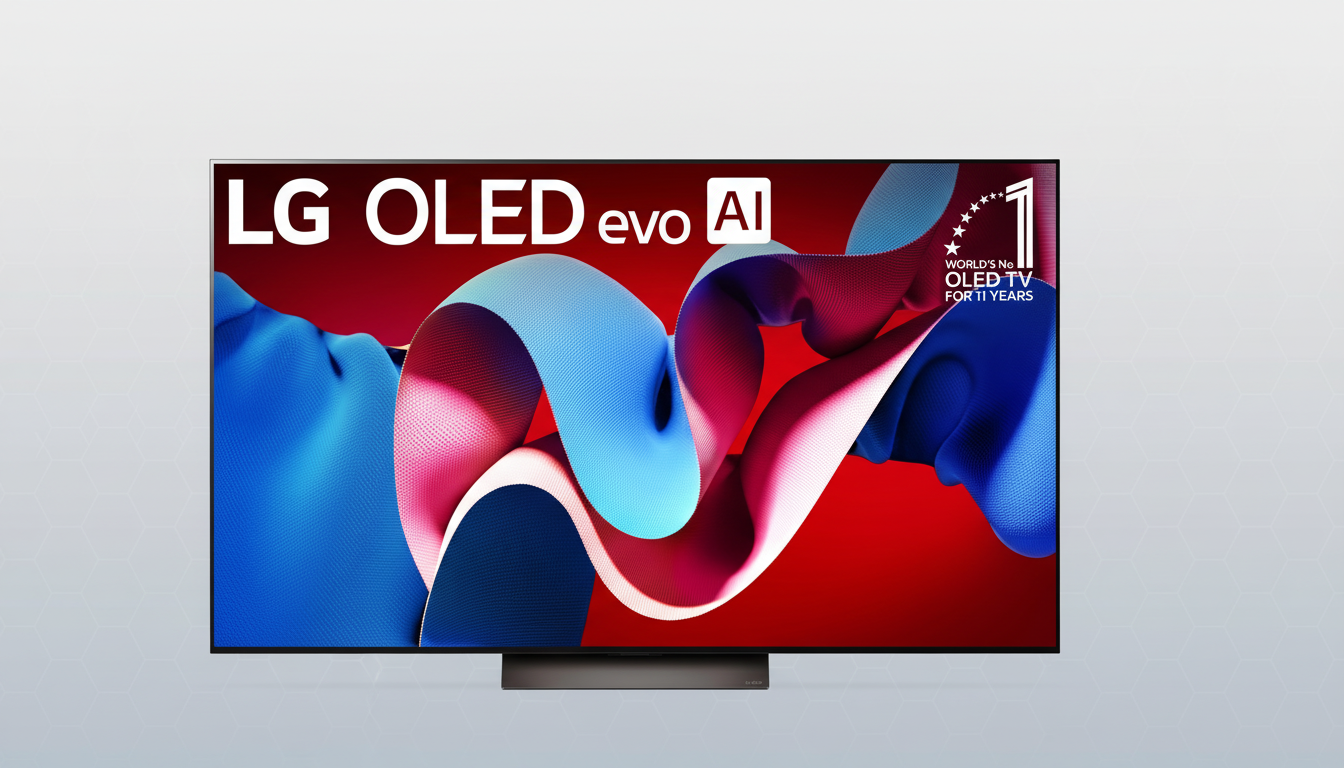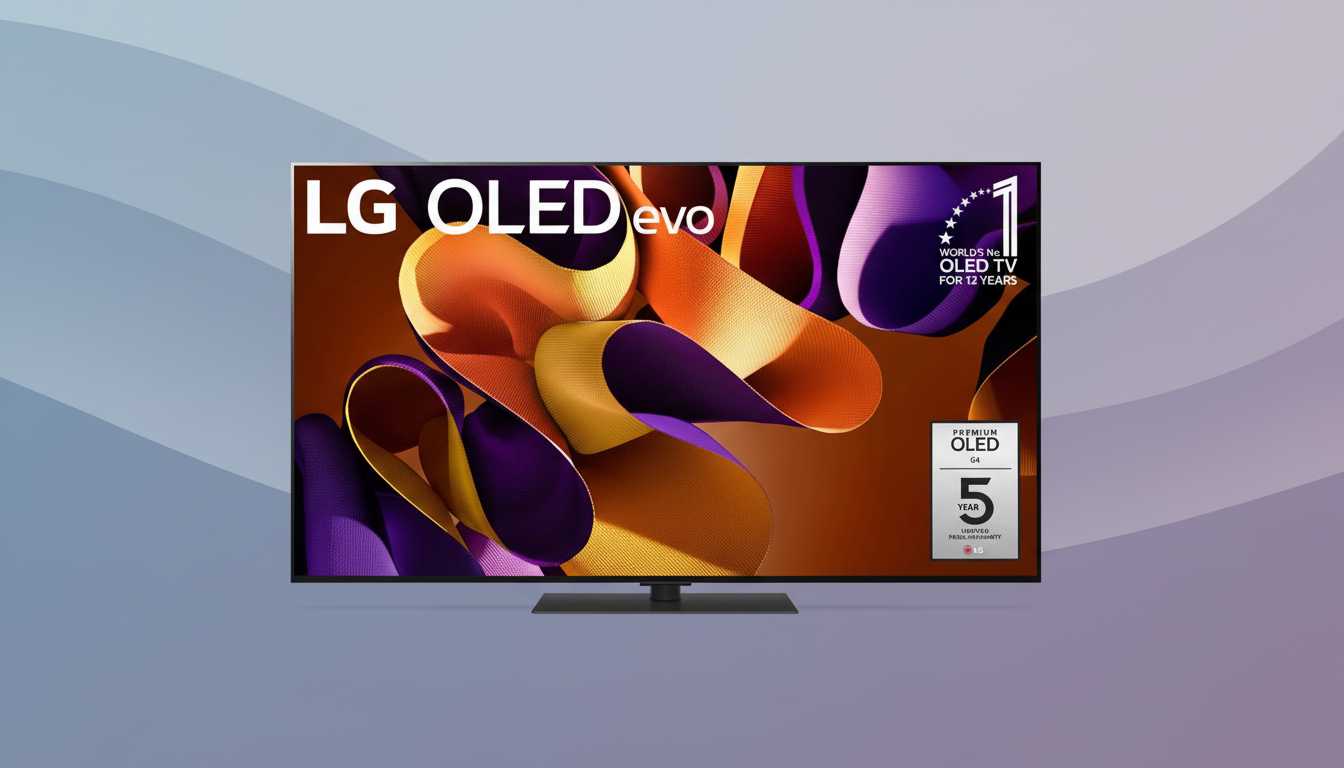A flagship 65-inch OLED has fallen through the price basement. The LG 65-Inch Class OLED Evo AI (polarizing name for a TV, but we’ll forge onward) is currently on sale at $1,996.99 on Amazon — that’s a $900 savings from its list price of $2,896.99 and a 31 percent discount that price-tracking firm Camelcamelcamel lists as the all-time low for this model.
For holiday price-watching consumers, this is the type of landing that on premium OLEDs usually doesn’t come until doorbuster week is upon us, and it’s a best-of-season price — stock, even at this late date, moves quickly. If you’ve been patiently waiting for a true sub-$2,000 premium OLED at 65 inches (if so, can I buy you a drink?), this is that time.

Why This Deep Price Cut on LG’s OLED Is Noteworthy
OLED panel costs have trended lower this year, but high-end 65-inch models with the latest processing and gaming features generally sit above the $2,200 range. Analyst firms such as Omdia say that while OLED deliveries grow, average selling prices are subdued on flagship lines. It’s rare to see a current-gen LG OLED Evo AI sink down to $1,996.99 — and historically, when a model bottoms out at some new low price point, it doesn’t stay there long.
For deal watchers, this is not a coupon code situation. It’s a big, shiny $900 price cut — the kind of thing that brings marquee displays within arm’s reach for buyers who were browsing midrange LCDs a week ago. It also stymies a lot of rival premium 65-inchers that don’t carry four full-bandwidth HDMI 2.1 inputs or LG’s latest AI picture pipeline.
How LG’s OLED Evo AI Elevates Picture and Sound Quality
What you gain with LG’s OLED is the same tech that has held it up as the gold standard for home cinema: more than 8.3 million self-lit pixels providing true black, pixel-level contrast, and stunning color volume. HDR material lands with authority courtesy of support for Dolby Vision, while there’s a convincing height and surround effect to be heard too (provided you have compatible audio gear) thanks to Dolby Atmos.
Filmmaker Mode maintains the creative intentions by turning down exaggerated processing and instead locking in correct color rendering and gamma curves. That’s significant where today’s prestige streaming catalogue is concerned, yes, as mastering in the current day is done with no signal lower than absolute black. In the real world, that means dark scenes feel deep and atmospheric but aren’t just grayish and washed out.
Under the hood, LG included its Alpha 11 AI Processor, which is designed to process scenes in real time to smooth out textures and edges while stabilizing skin tones, as well as adjust tone mapping on an object-by-object, per-frame basis to maintain highlight detail. Independent testing of LG’s 2024 Alpha 11 OLEDs, including from labs like RTINGS and FlatpanelsHD, has revealed a significant leap in HDR brightness compared to previous generations; this helps specular highlights pop without crushing fine detail.
Why This OLED Is a Gaming-Worthy Screen With VRR and 120Hz
Input latency is also very low, response time is claimed to be 0.1ms, and the panel can handle up to 120Hz with VRR for a smoother, tear-free in-motion experience.
Support for both G-Sync and FreeSync ensures that PCs and consoles are equally supported, while ALLM automatically switches to a low-lag mode whenever you start up a game.

Four HDMI 2.1 ports mean you can connect both next-gen consoles, a gaming PC, and an eARC sound system all at once — a clear edge on rivals that restrict full-bandwidth inputs to one port.
LG’s Game Optimizer dashboard makes black stabilizer, VRR status, and audio presets available at a touch without needing to navigate the stuffy OSD.
How It Compares in the Premium Tier of 65-Inch TVs
Samsung’s best QD-OLED sets offer phenomenal color luminance, and Sony’s cinematic processing is still superb, but this LG setup at this price point is tough to beat as a “do-everything” family-room centerpiece. LG’s webOS app store is mature, with AirPlay 2 and voice assistants on board, and eARC delivers a one-cable path to a Dolby Atmos soundbar or AVR. If you have a newer LG soundbar, other features such as WOW Orchestra can link TV and bar speakers together for an expanded soundstage.
Worries about burn-in on OLED are somewhat offset by new protections, including pixel shifting that rearranges pixels slightly so the area of a static image isn’t always repeated to the same minute degree; refresh cycles that completely black out the entire screen; and logo luminance control. Recent LG OLEDs, including 2019 models, are generally rated as reliable for mixed content with reasonable brightness settings by both Consumer Reports and a variety of other testing outlets.
Purchase Advice and Setup Tips for Getting Started
Based on historical deal history and Adobe’s holiday retail analyses, with electronics markdowns averaging 20–30% during peak season, a 31% discount on a flagship OLED is beyond the pale. And if you are prepared to level up, it’s defensible to buy now rather than gamble on a narrow window of sellouts later. Like any deal, pricing and availability are subject to change without notice.
- Film content: For the best results, enable Filmmaker Mode (the Dolby Vision version will supersede when you play DV movies), and set Dolby Vision IQ if you have variable room lighting.
- Turn on 120Hz in your console settings, make sure VRR is on, and let the TV’s Game Optimizer do tone mapping using HGIG (when supported) for games.
- If you’re adding a soundbar, use the eARC-capable port and turn off the TV’s speakers unless you are using an LG feature specifically meant to work with them.
Bottom line: A $900 drop to $1,996.99 puts a true reference-grade 65-incher OLED into the price range that typically would only get you a mid-tier LCD TV.
If you’re looking for cinematic contrast, cutting-edge HDR, and top-tier gaming support on your feature checklist, this is the TV deal to beat right now.

